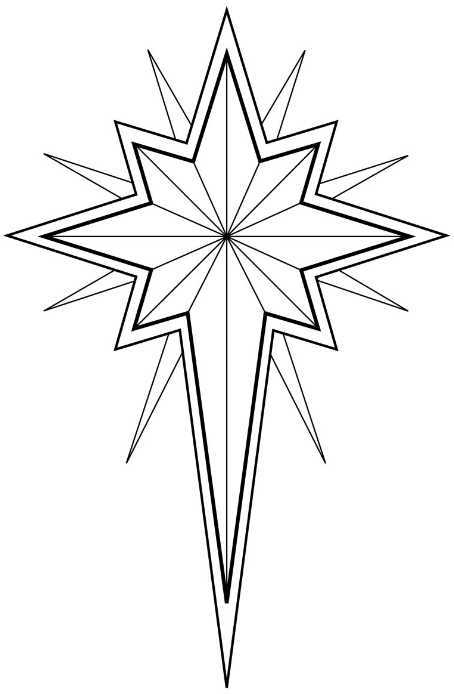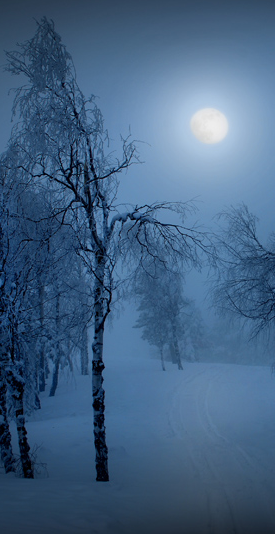
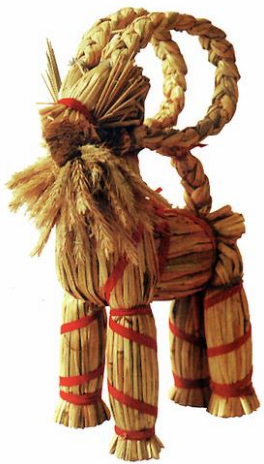 </Most of our Winter Solstice or Yule traditions come from Scandinavia and Germany. Even the name, Yule, is ancient Scandinavian for “the festival at Winter Solstice”. This year I attended a Scandinavian Yule ritual at a friend’s house that was totally new to me—the sacrifice of the Yule Goat.
</Most of our Winter Solstice or Yule traditions come from Scandinavia and Germany. Even the name, Yule, is ancient Scandinavian for “the festival at Winter Solstice”. This year I attended a Scandinavian Yule ritual at a friend’s house that was totally new to me—the sacrifice of the Yule Goat.
It seems that Thor, the mightiest of the Norse gods, rides through the worlds in a chariot pulled by two goats, tanngrisnir (teeth barer) and 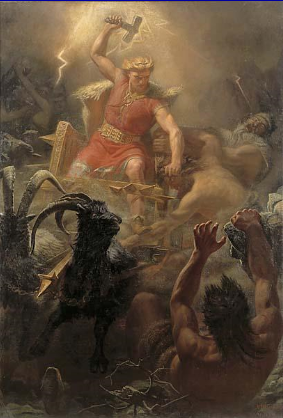 tanngnjostr (teeth grinder). He periodically kills them and serves their delicious, nourishing meat to his guests. The next day he resurrects them with a stroke of his hammer. This explains why the goat is such an important part of Scandinavian Yule festivities and why we hang those cute little straw goats on our Yule trees. They are like the sun, or the God himself, that dies and is born again each Winter Solstice.
tanngnjostr (teeth grinder). He periodically kills them and serves their delicious, nourishing meat to his guests. The next day he resurrects them with a stroke of his hammer. This explains why the goat is such an important part of Scandinavian Yule festivities and why we hang those cute little straw goats on our Yule trees. They are like the sun, or the God himself, that dies and is born again each Winter Solstice.
So we sat in a circle and called the Yule Goat, who soon appeared, sporting a long robe, a mask, and a set of impressive goat horns. “And what will you do to call back the light this Yule?” he asked each of us as he stalked around the circle. Fortunately, our answers satisfied him. If they hadn’t, the sun might not have returned. He went to his death bravely and was quickly resurrected. No, we didn’t eat him.
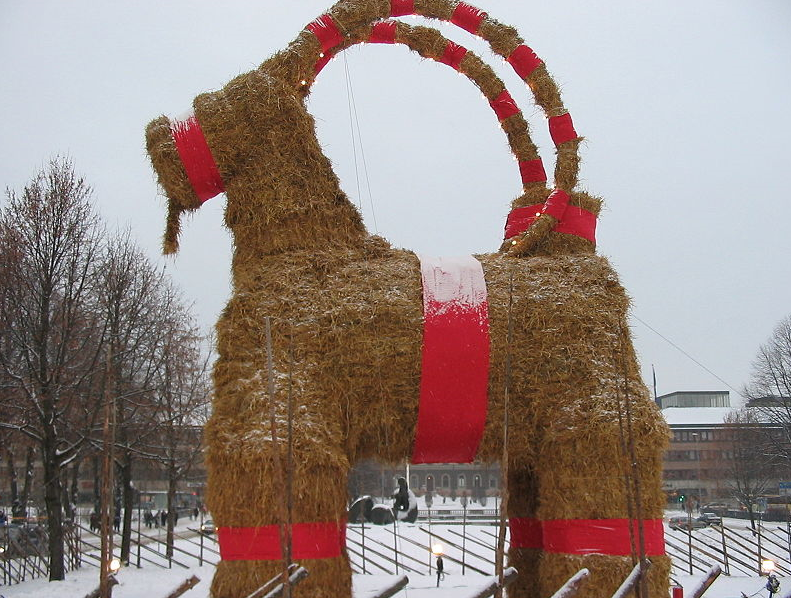
The Scandinavians build giant goats like this one every Yule; and although it’s illegal, they always seem to get set on fire. So we burned our own little straw goat just for good measure.
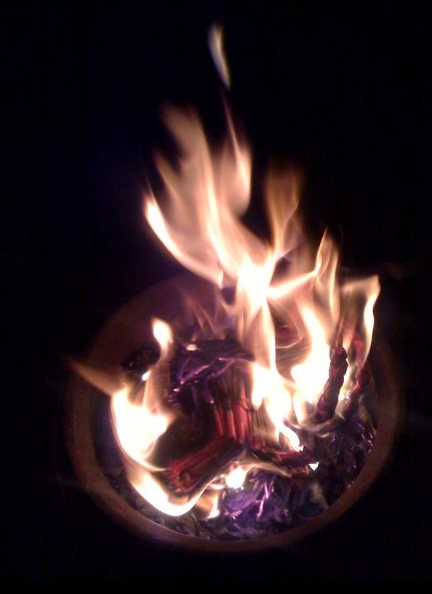
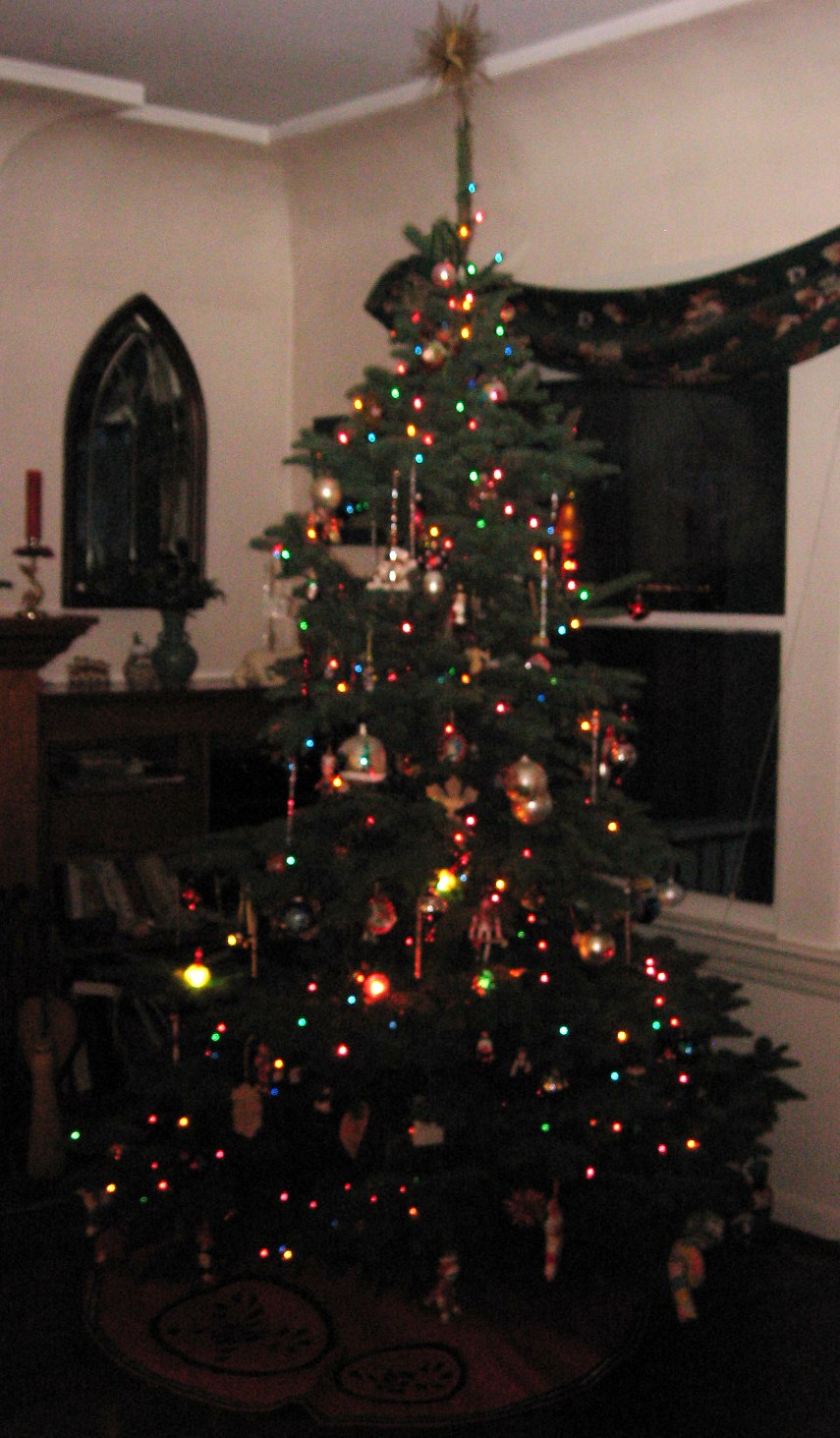 The Yule log and the Yule or Christmas tree also originated as part of the Winter Solstice celebrations of these countries. For millennia, pagans from Scandinavia to Germany to Rome to Egypt have brought in evergreen boughs and decorated them at Winter Solstice, but the first account of cutting down a tree, bringing it indoors, and decorating it occurred in what is now Estonia and Latvia in the 15th century.
The Yule log and the Yule or Christmas tree also originated as part of the Winter Solstice celebrations of these countries. For millennia, pagans from Scandinavia to Germany to Rome to Egypt have brought in evergreen boughs and decorated them at Winter Solstice, but the first account of cutting down a tree, bringing it indoors, and decorating it occurred in what is now Estonia and Latvia in the 15th century.
The thing that hadn’t registered with me until just this year is that all of the above are sacrifices. Whether it is a goat or a tree, we take a life to bring new life. In this way we mirror the death and rebirth cycles in nature and assure their continuance.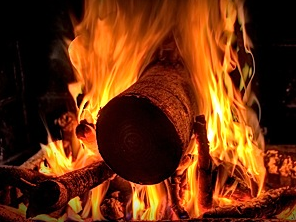
If we didn’t make these sacrifices, would spring come again? Would the Wheel of the year still turn?
Yes, of course.
But would we feel as intimately connected with this cycle? Would we still be in sync with it? Or would we miss out on all the healing magic of the changing seasons?
This intimate connection to the Universe is as essential to our well being as vegetables, clean water, and fresh air.


